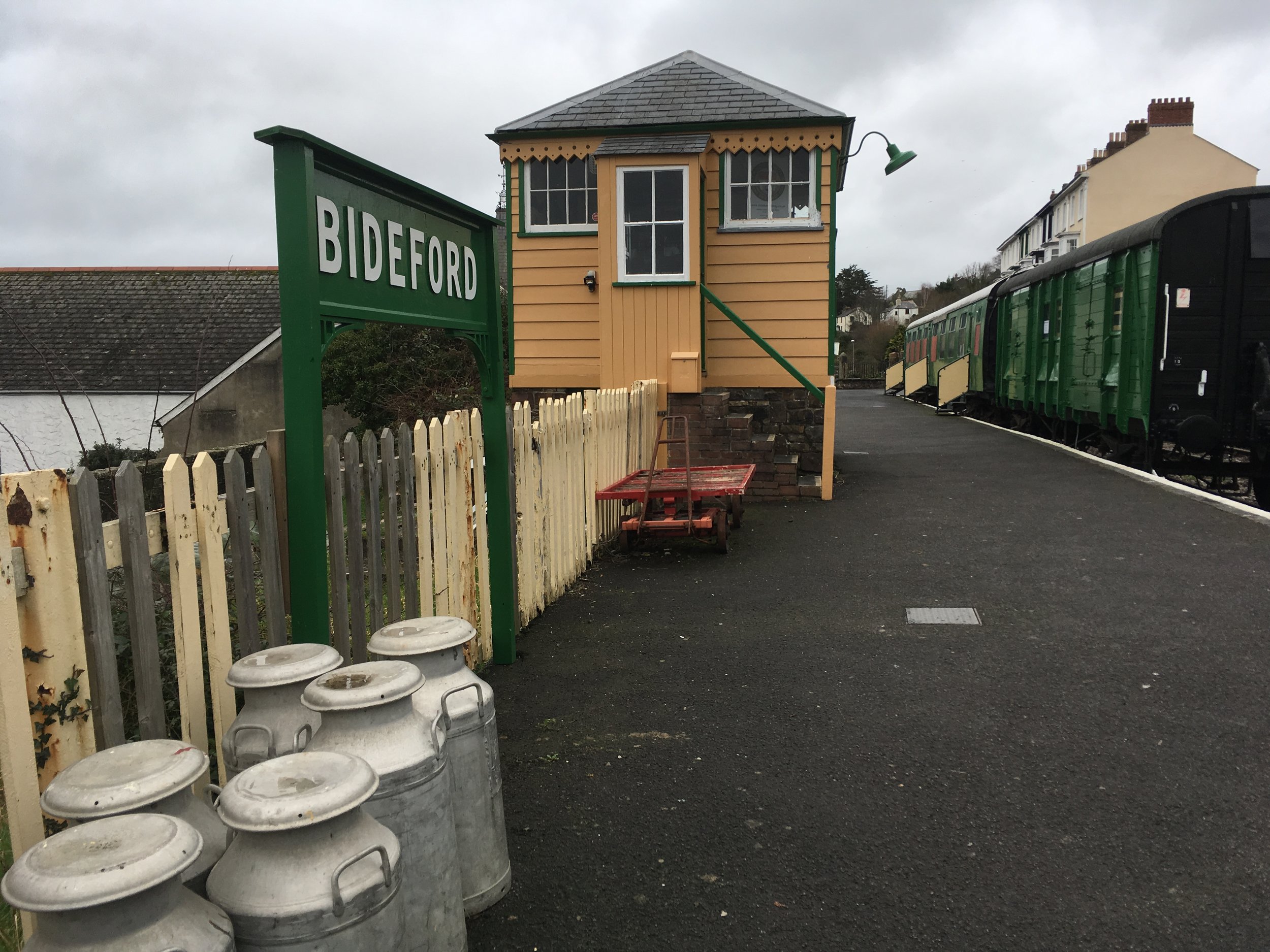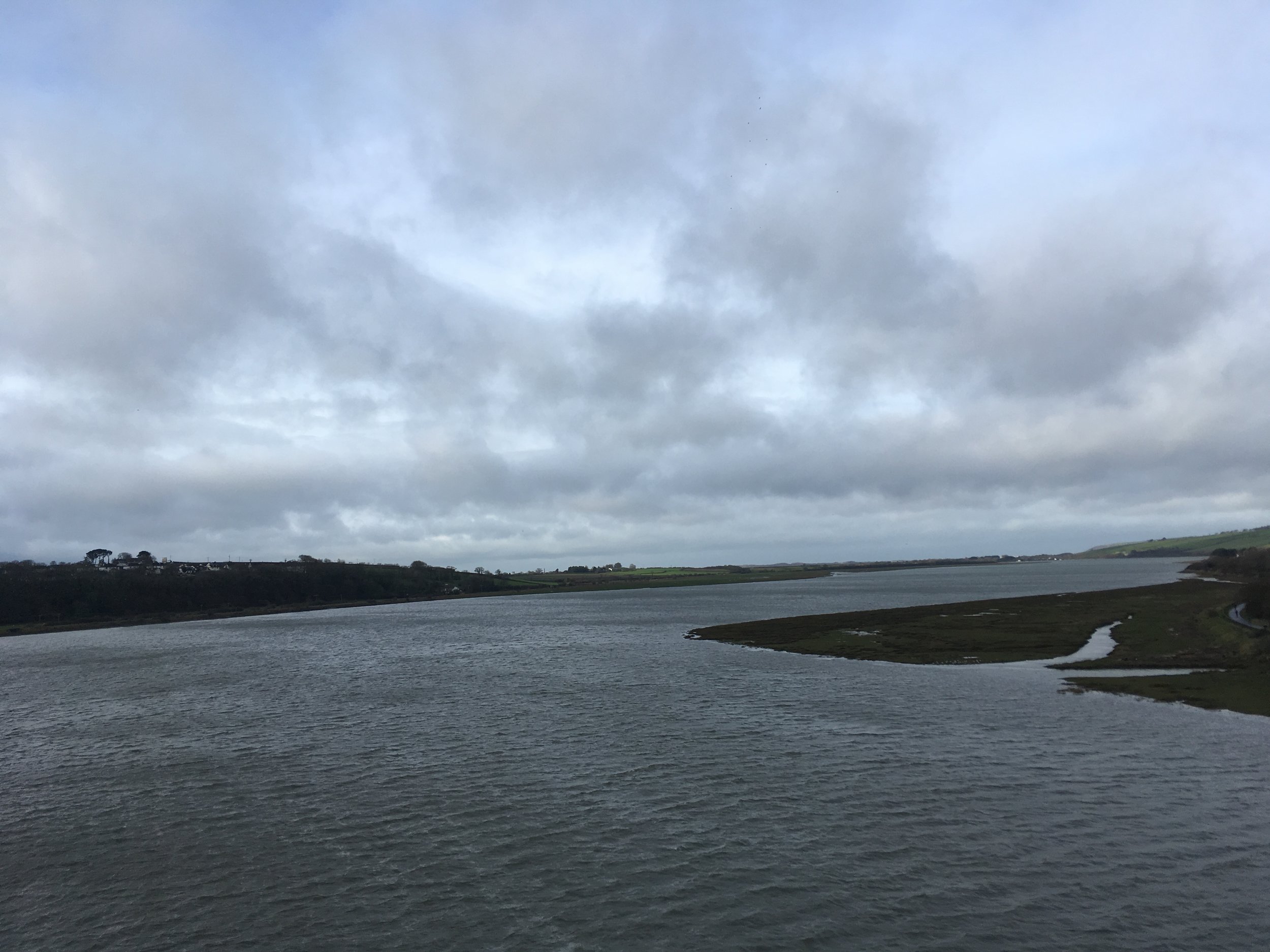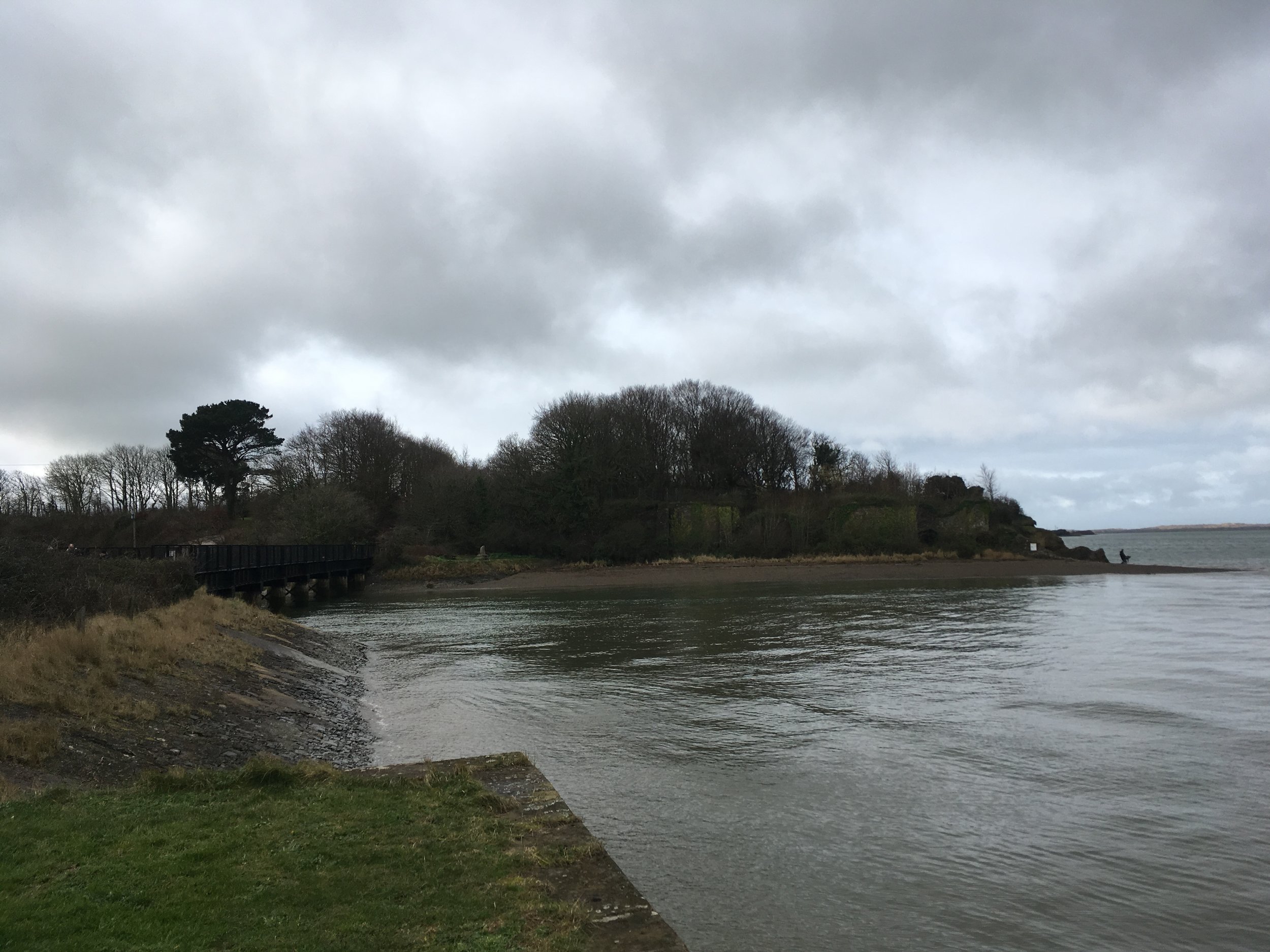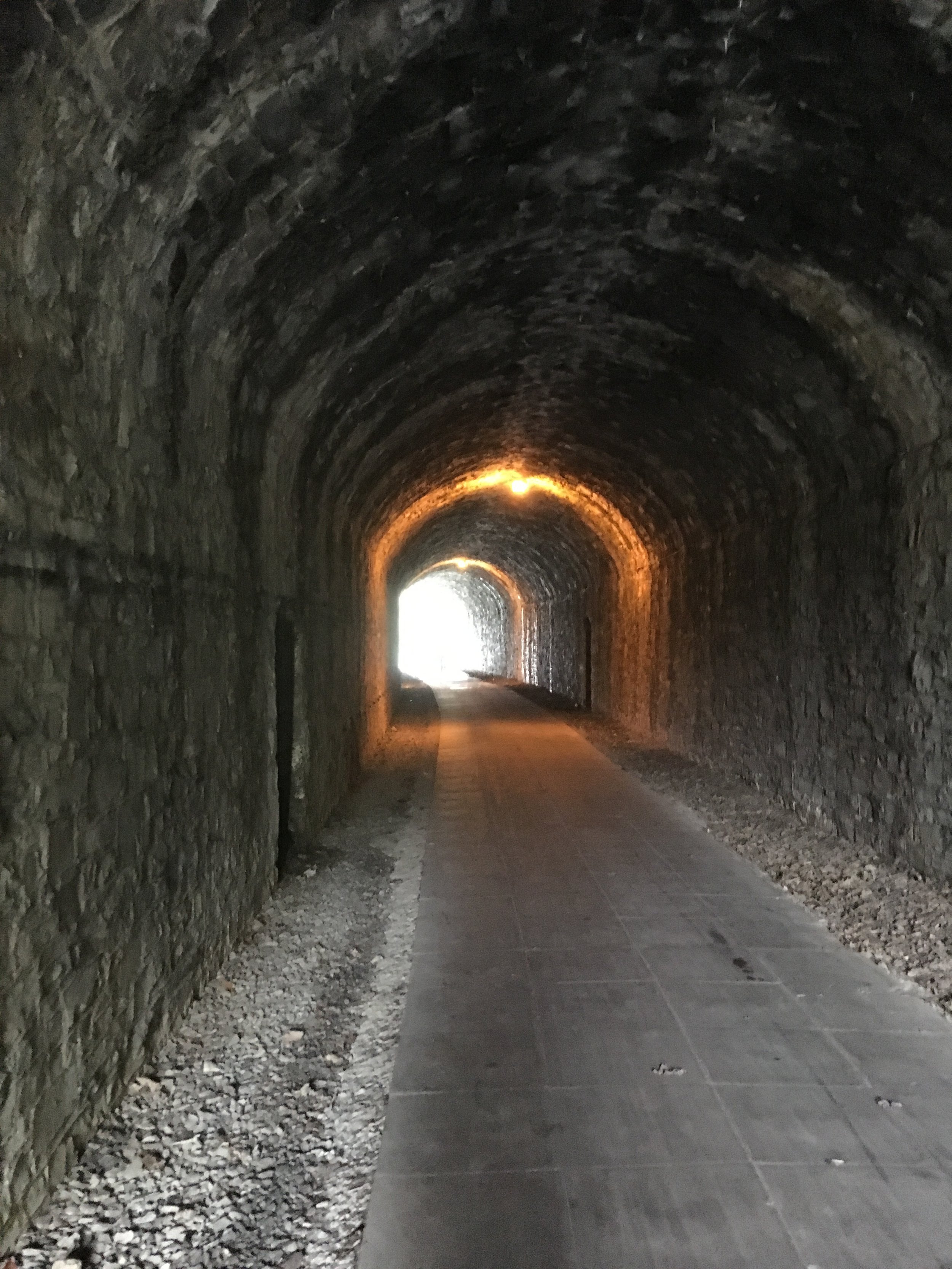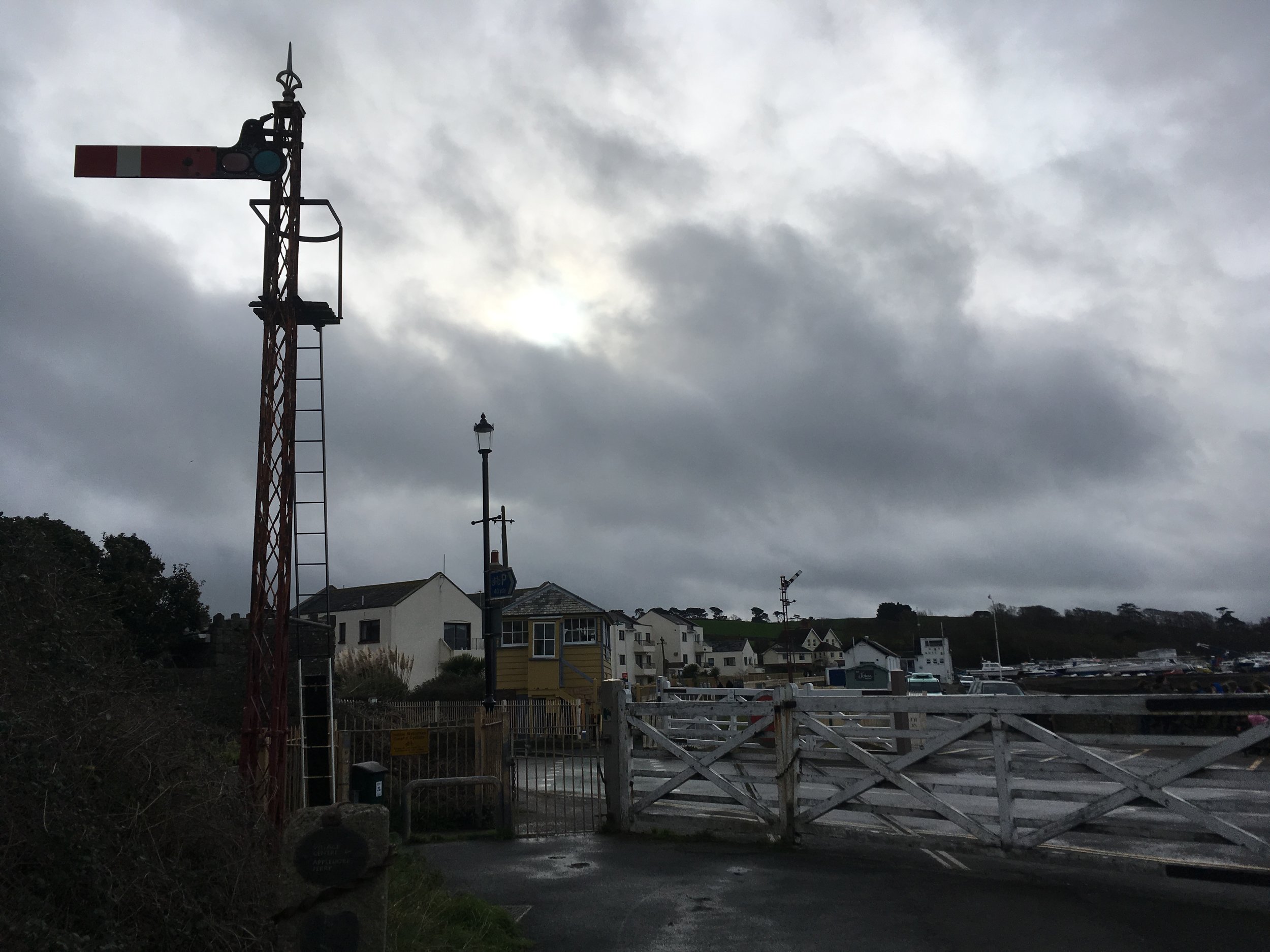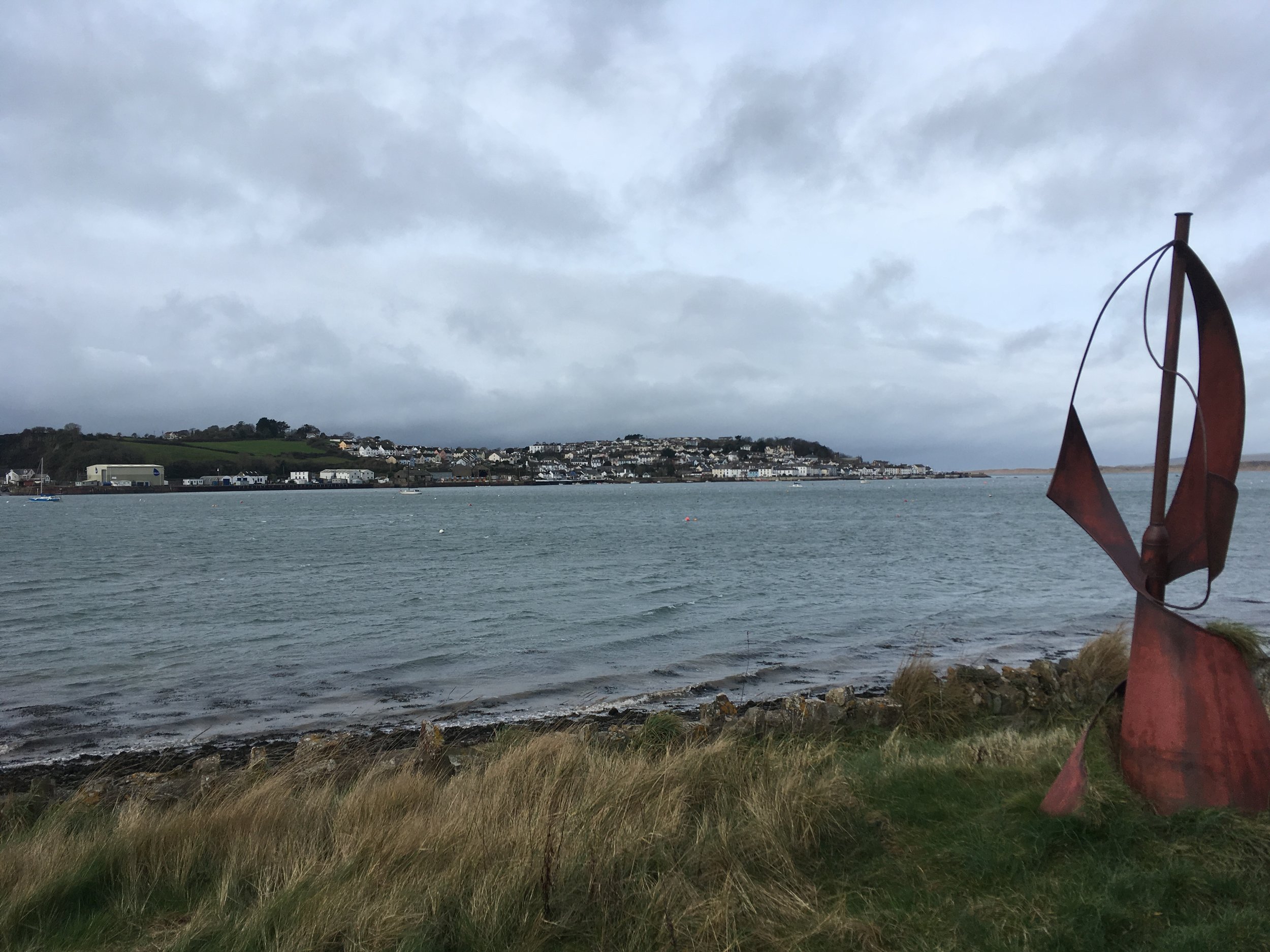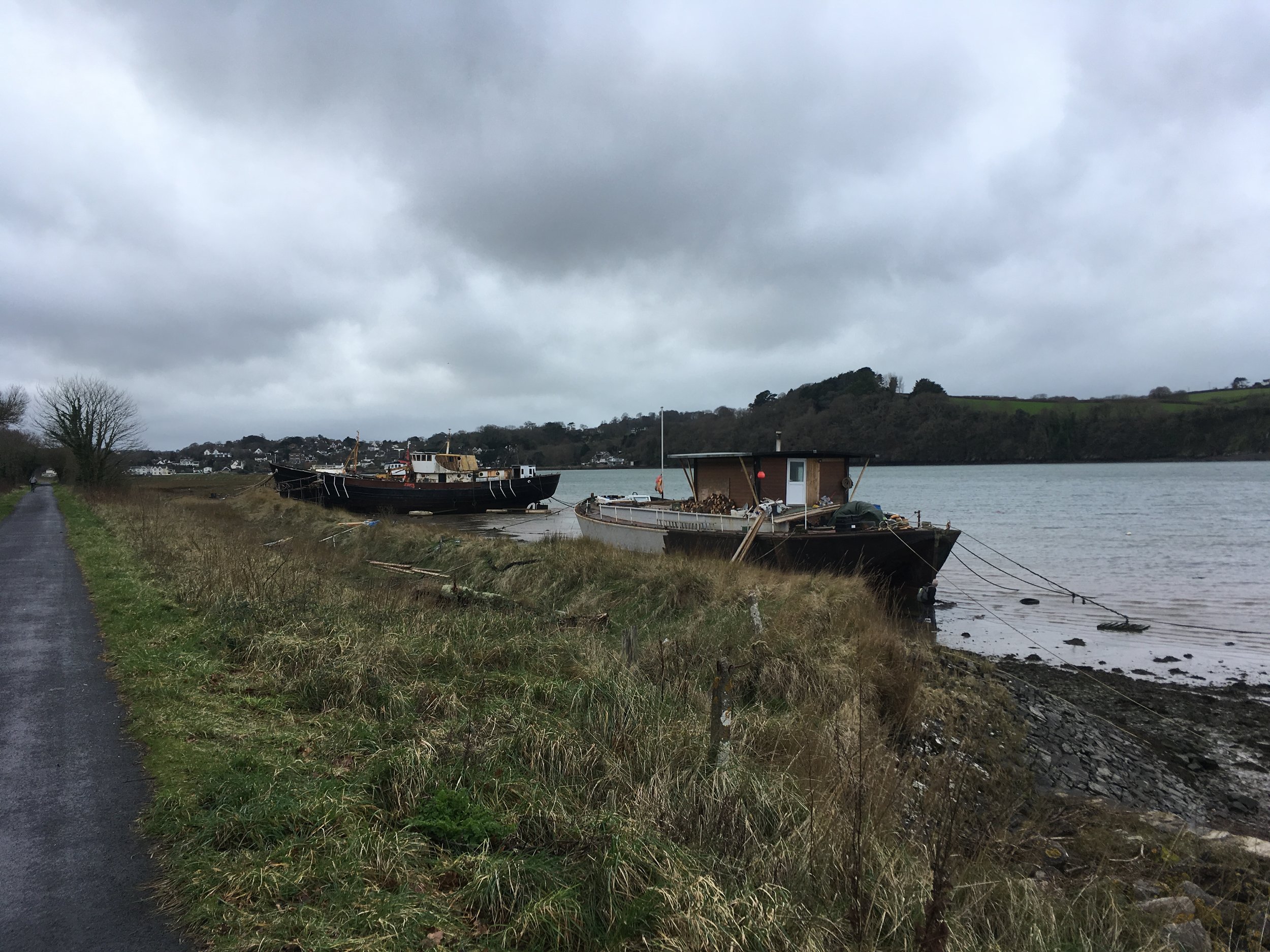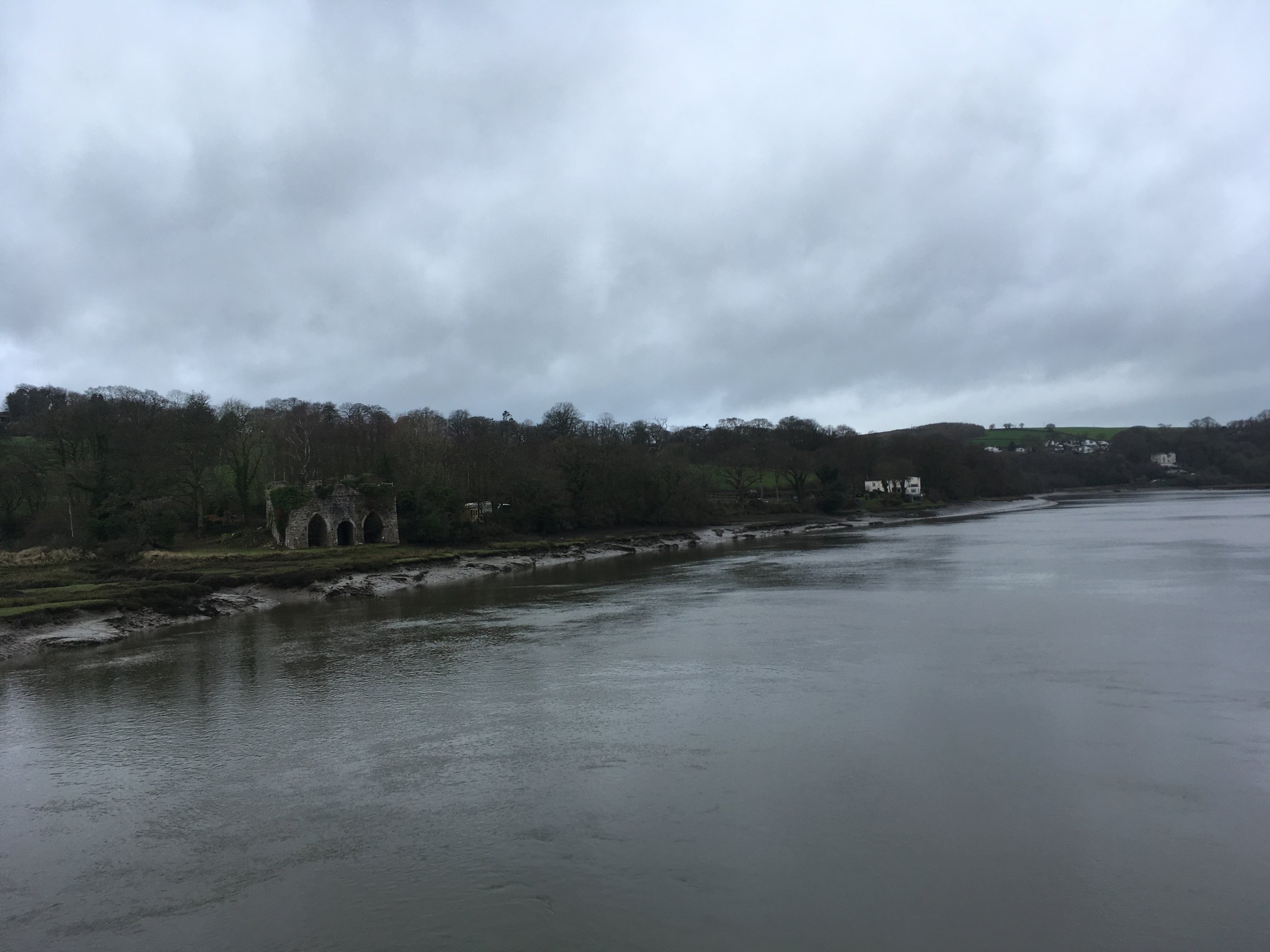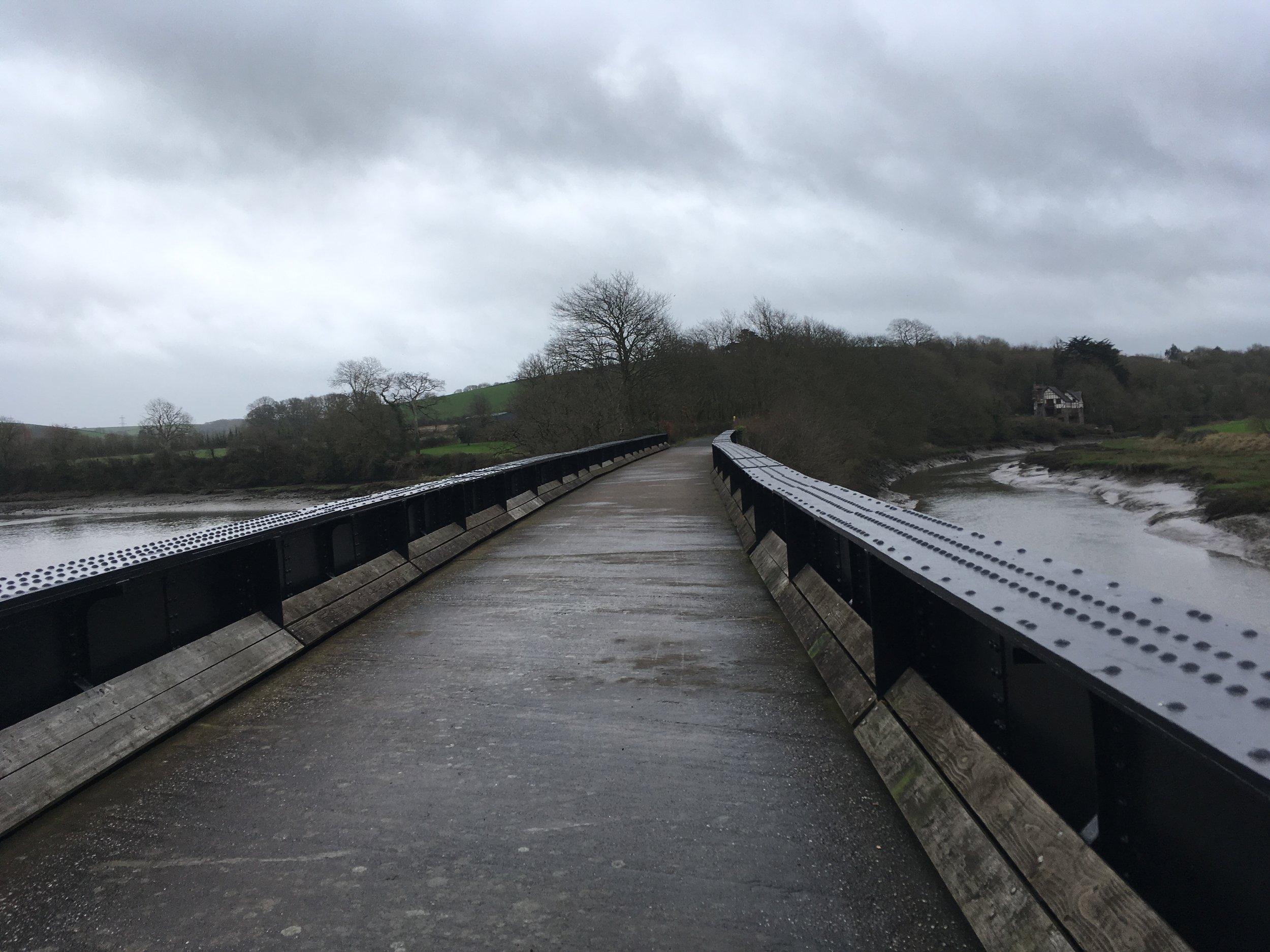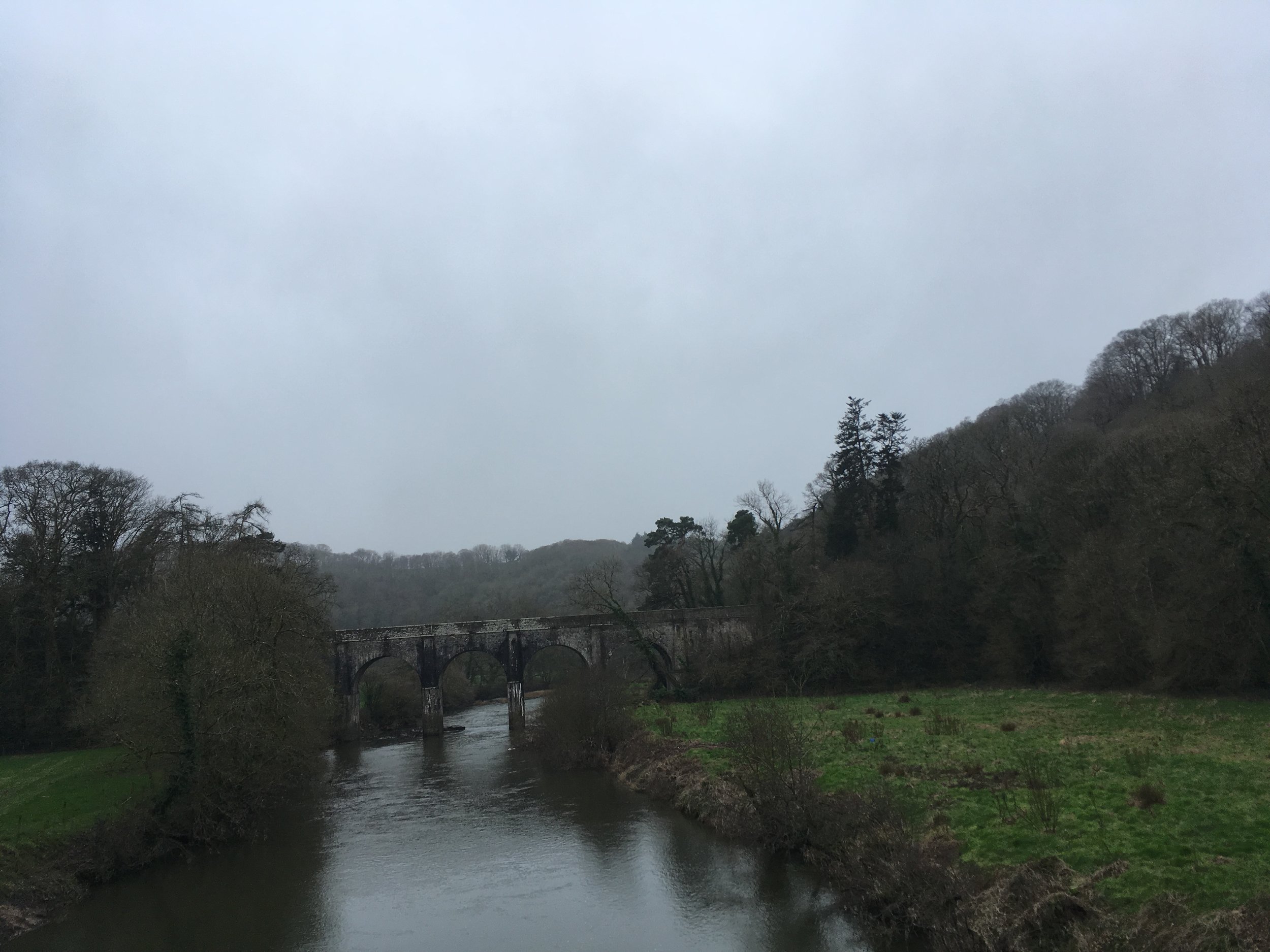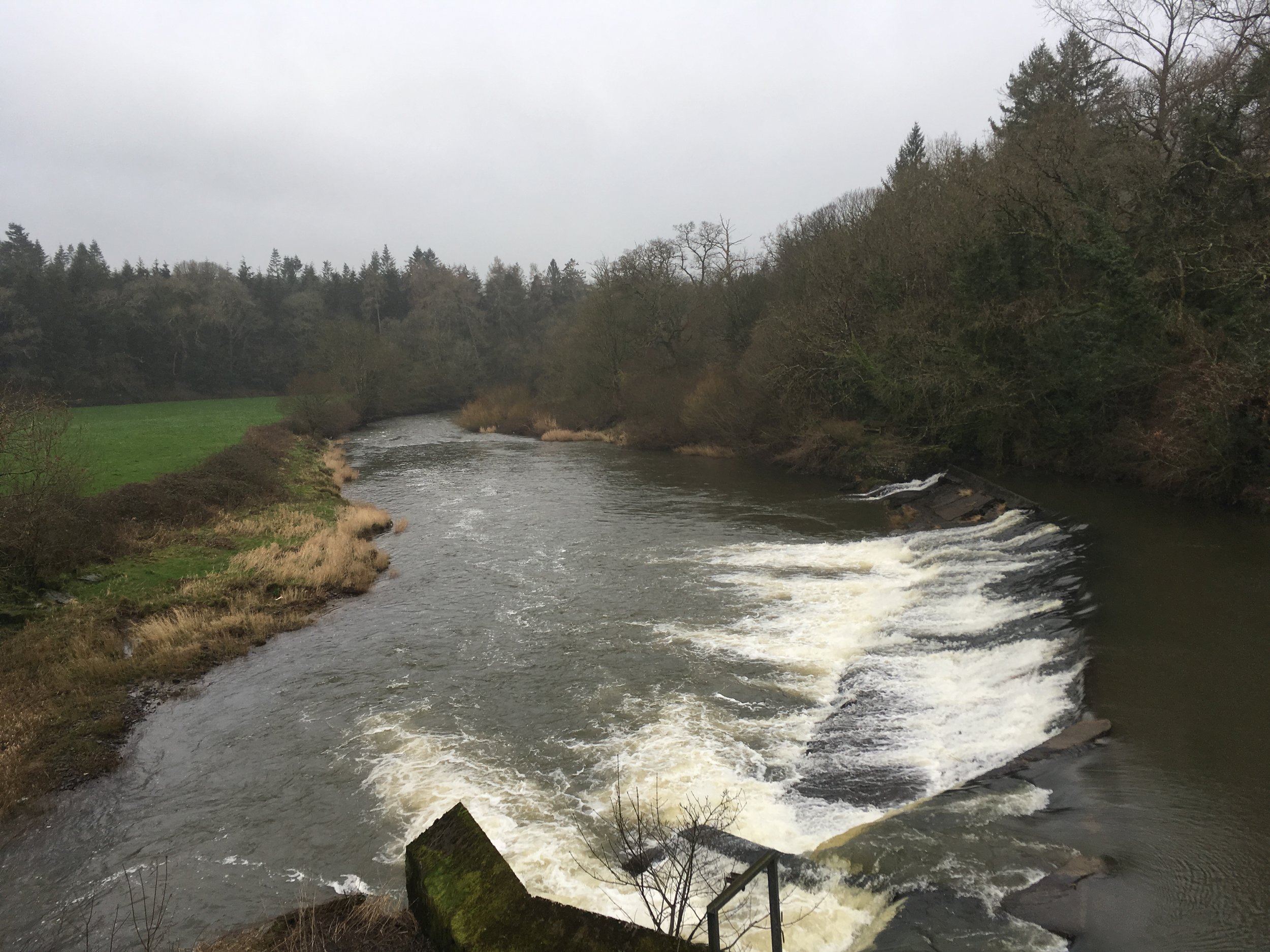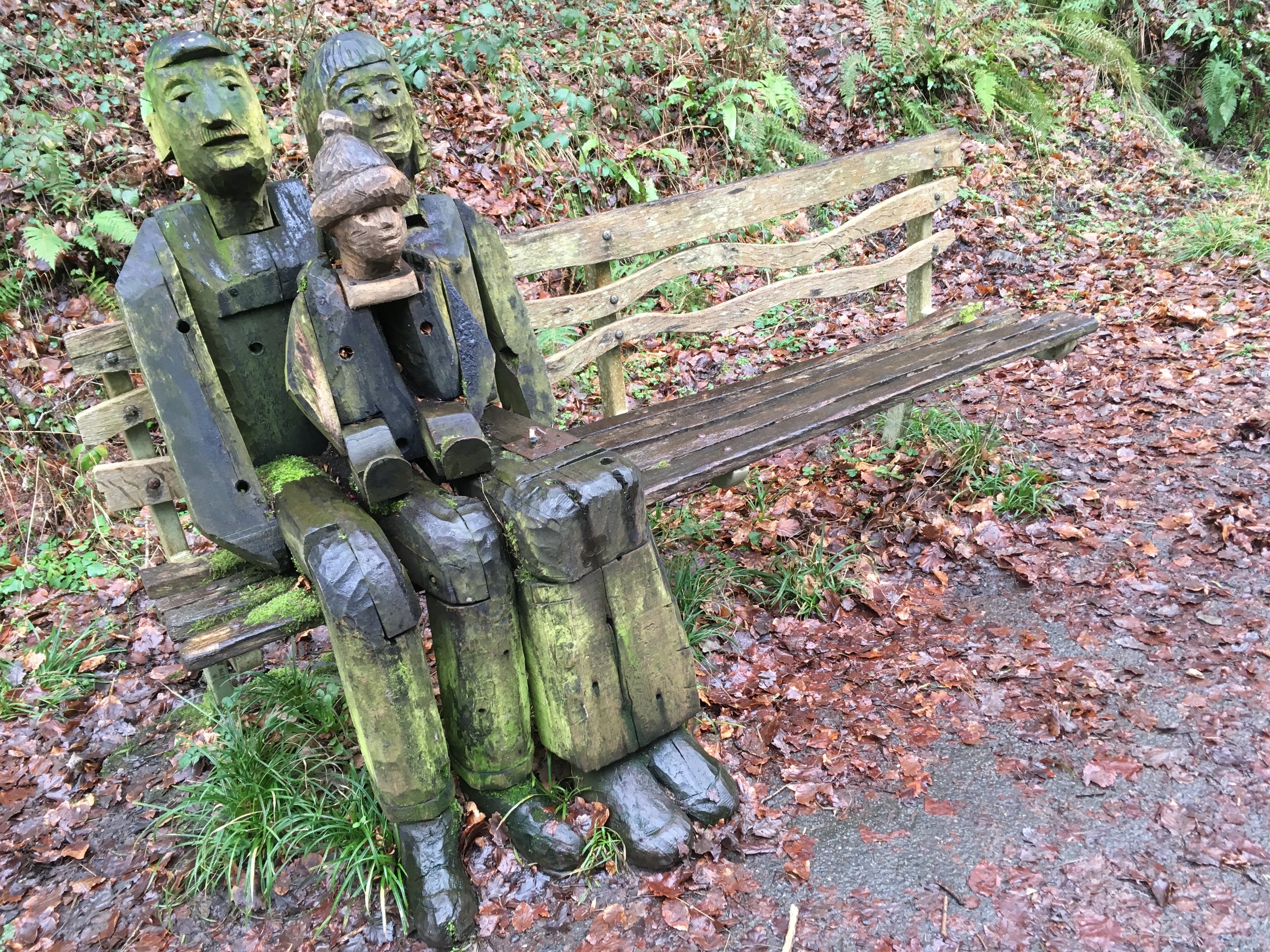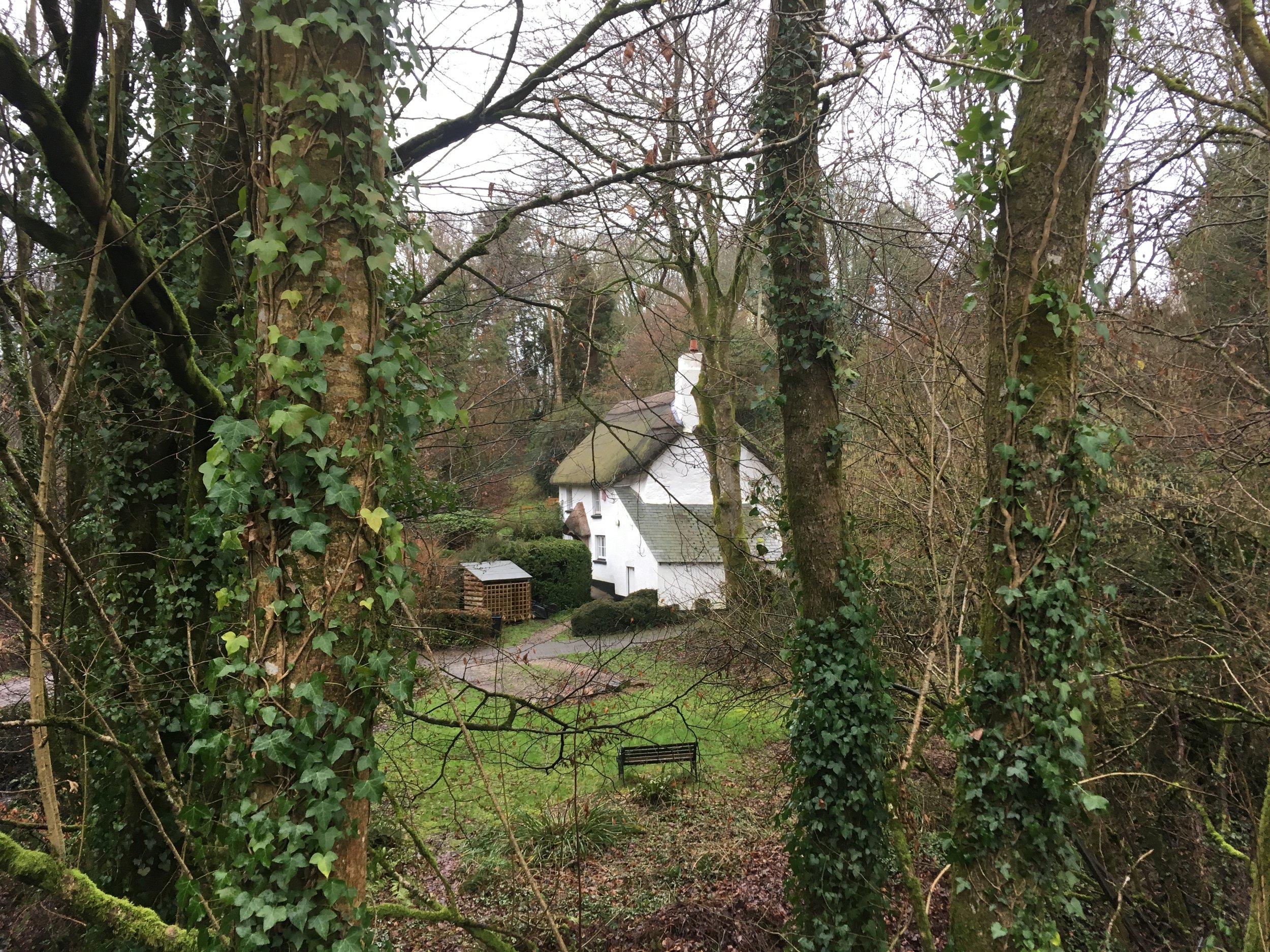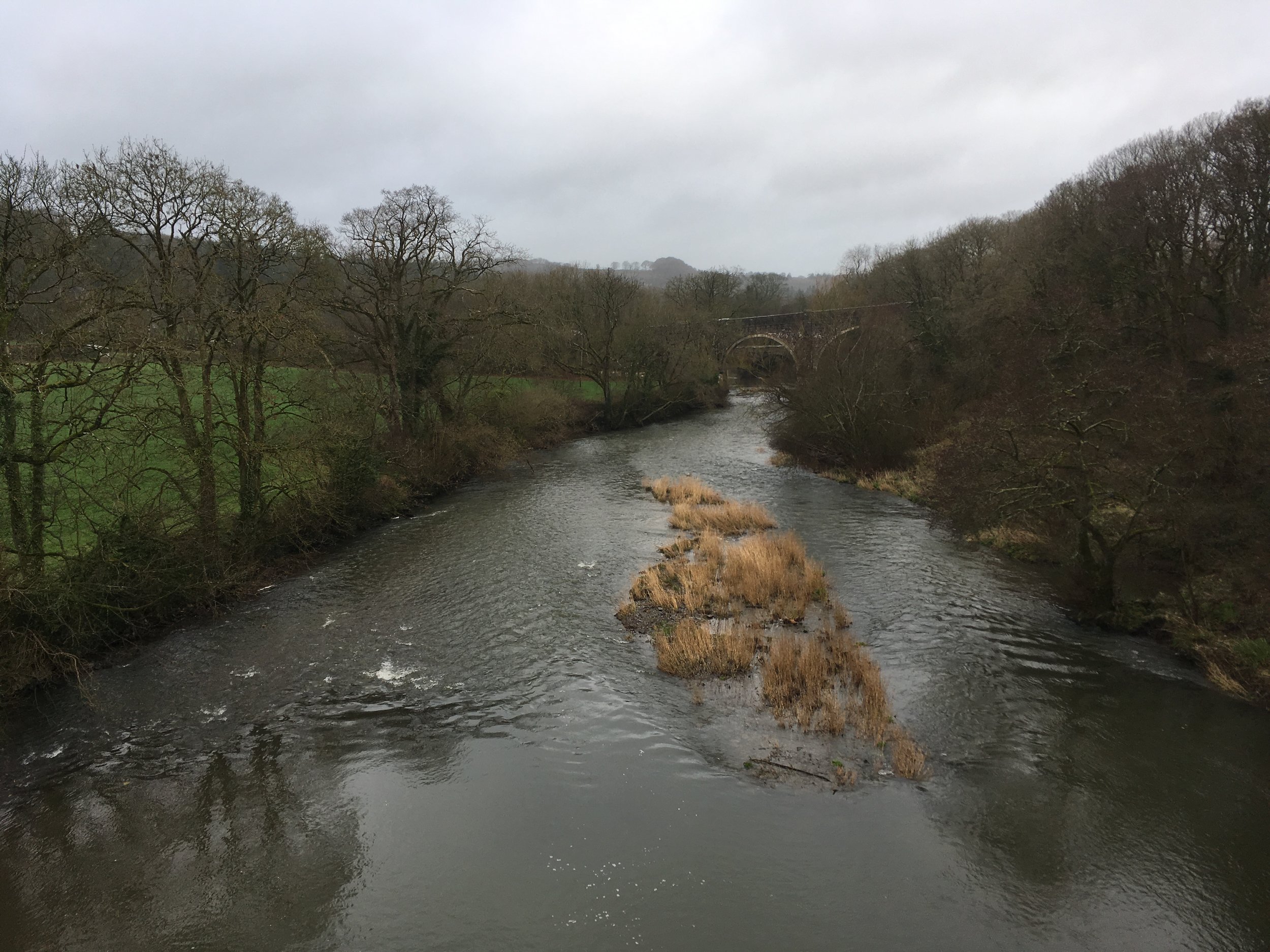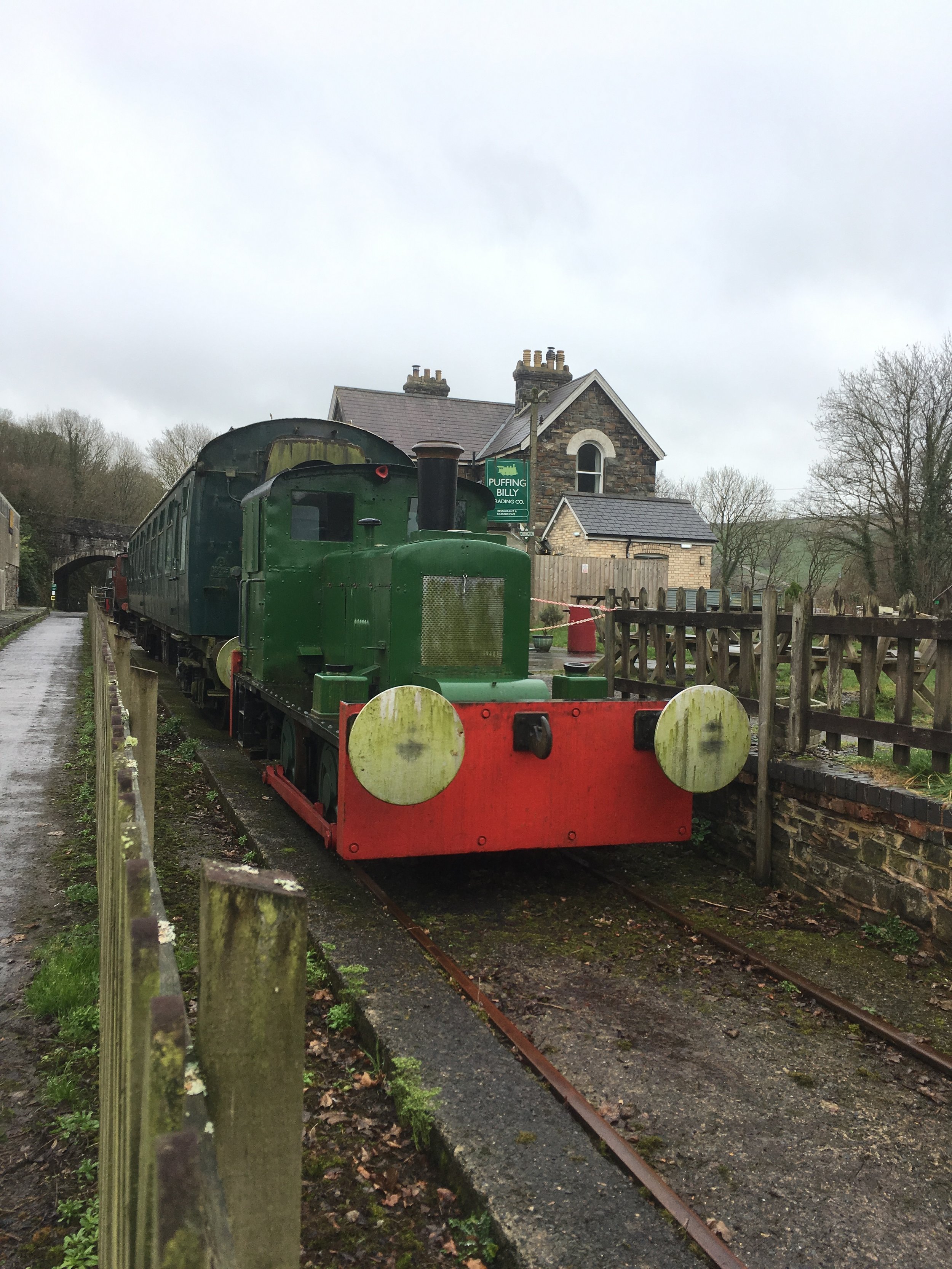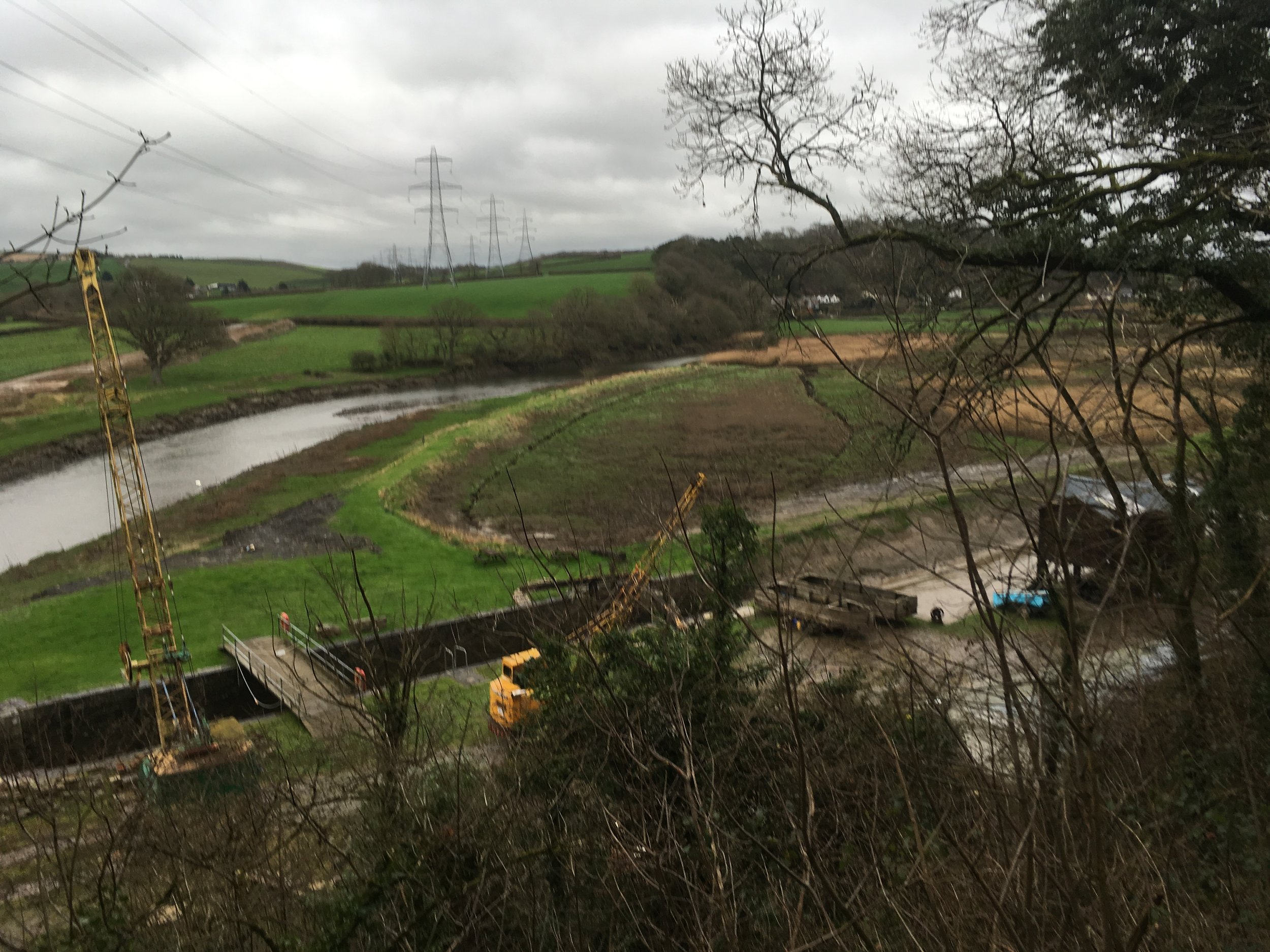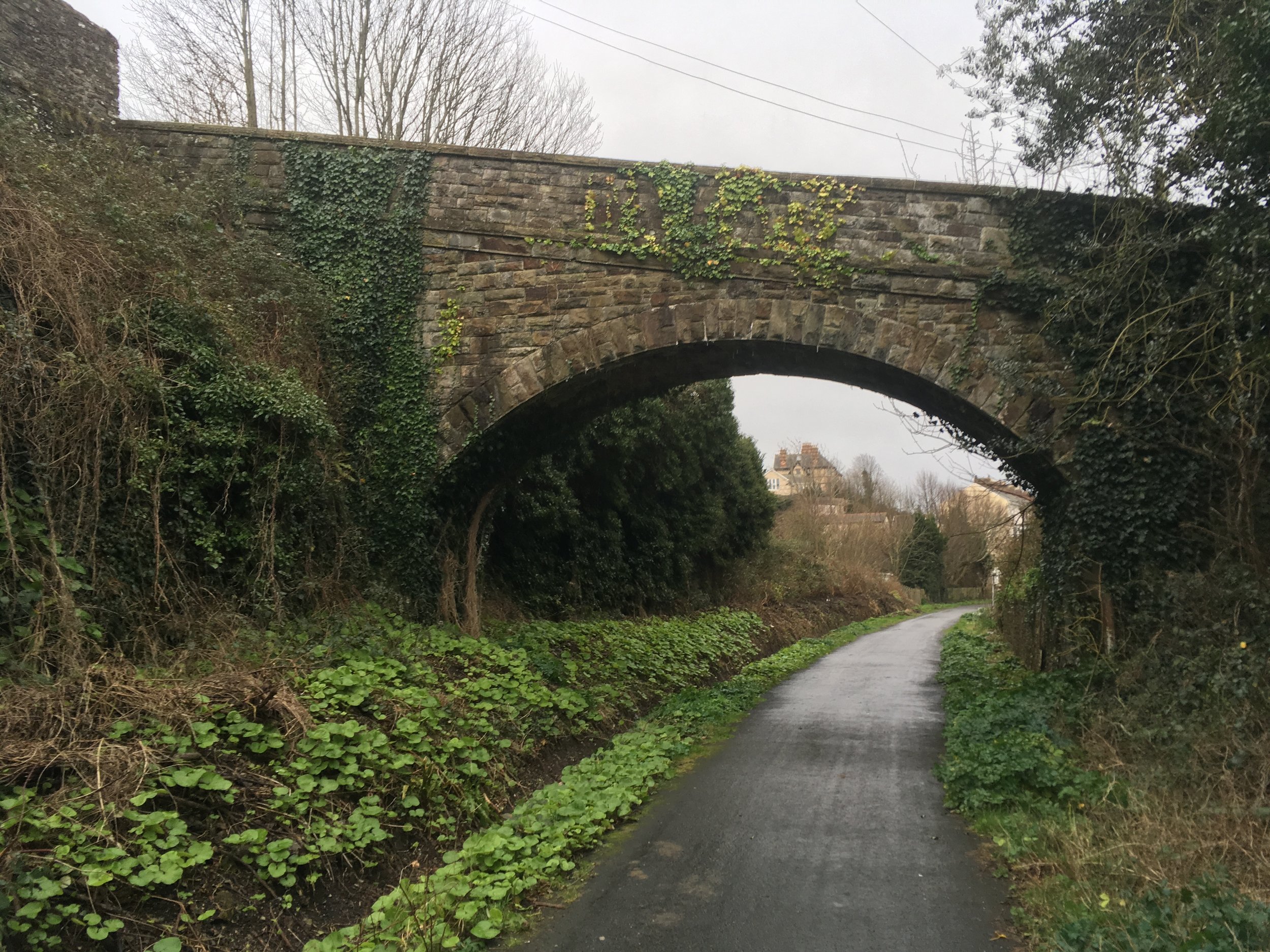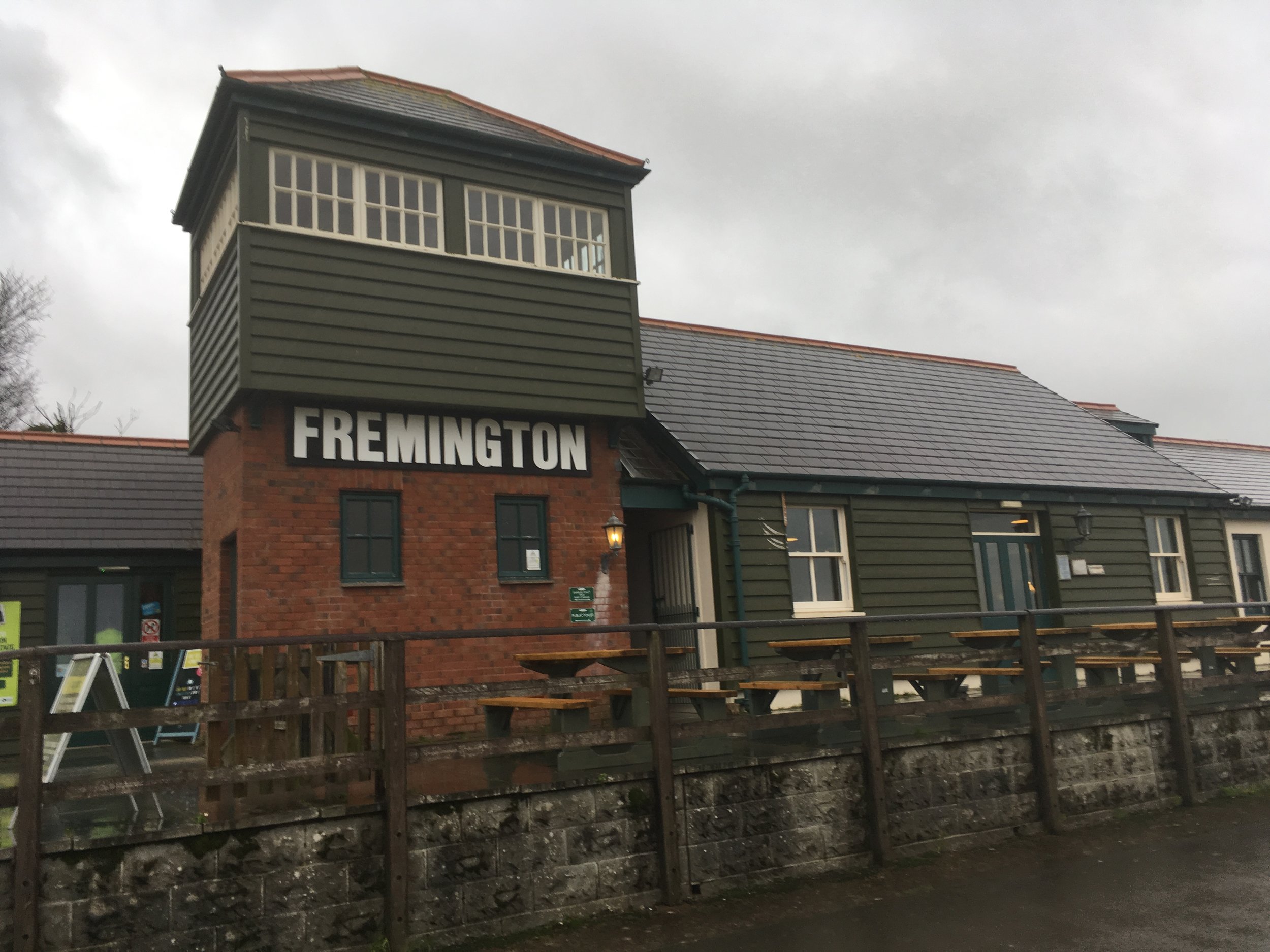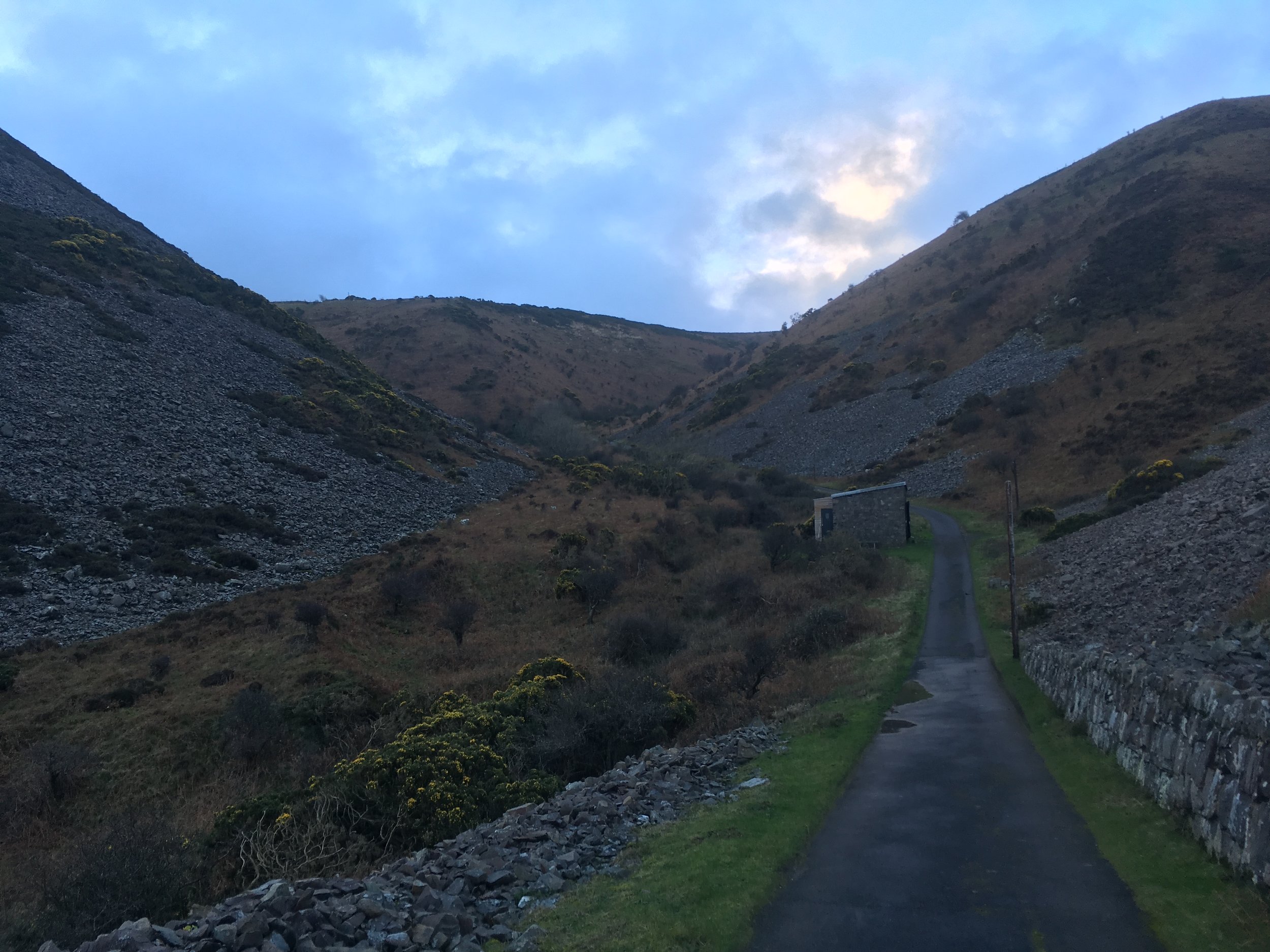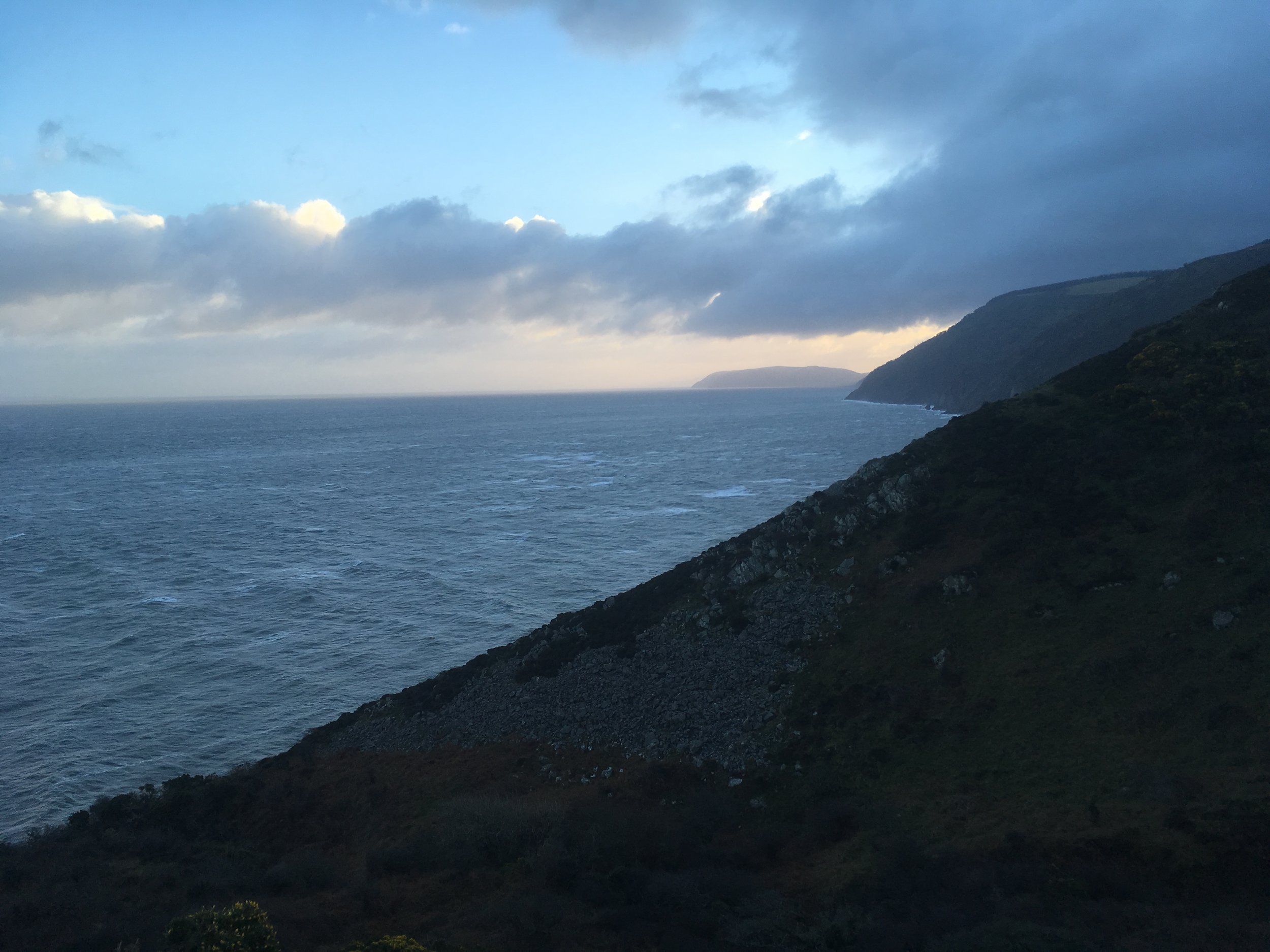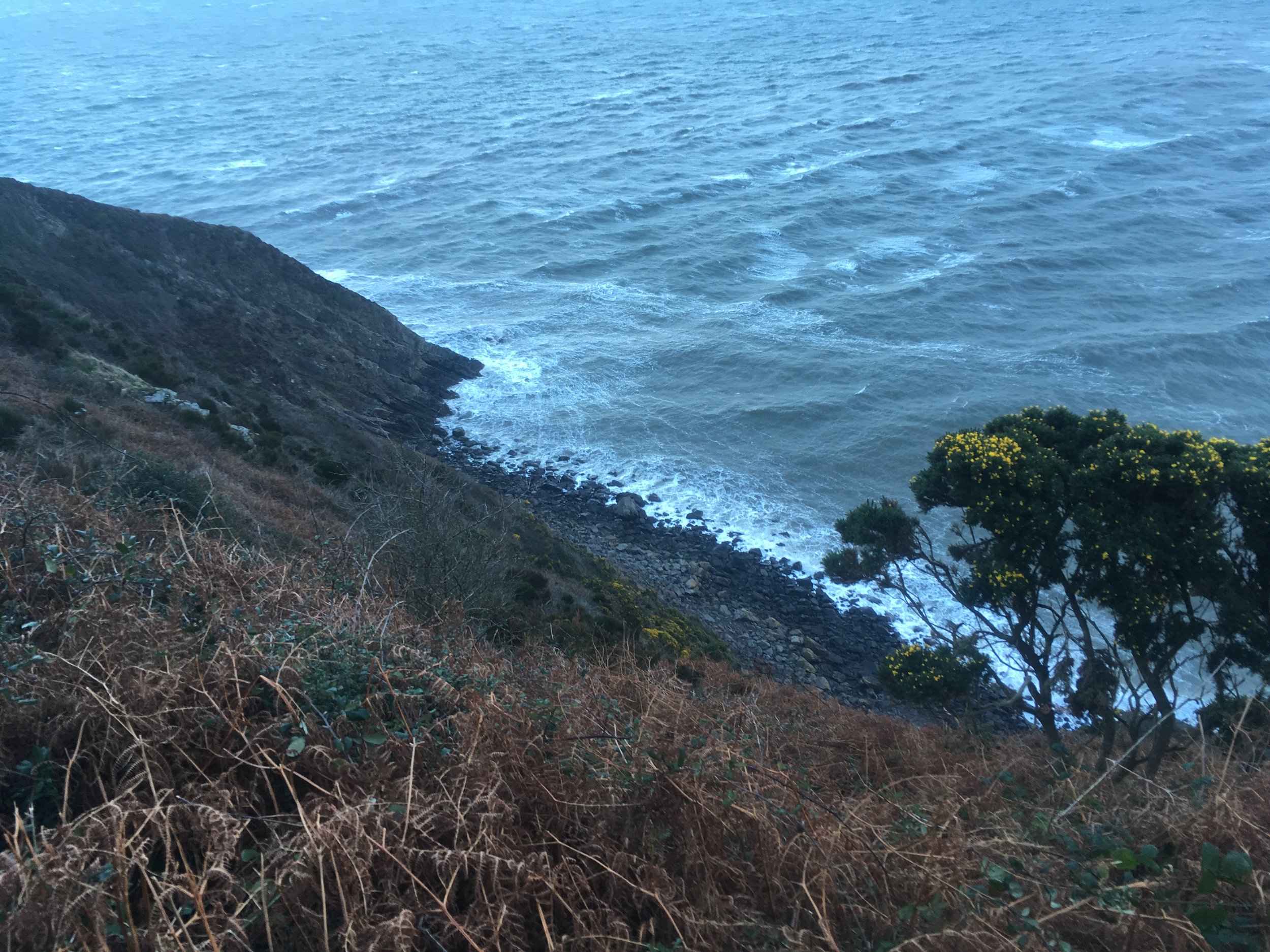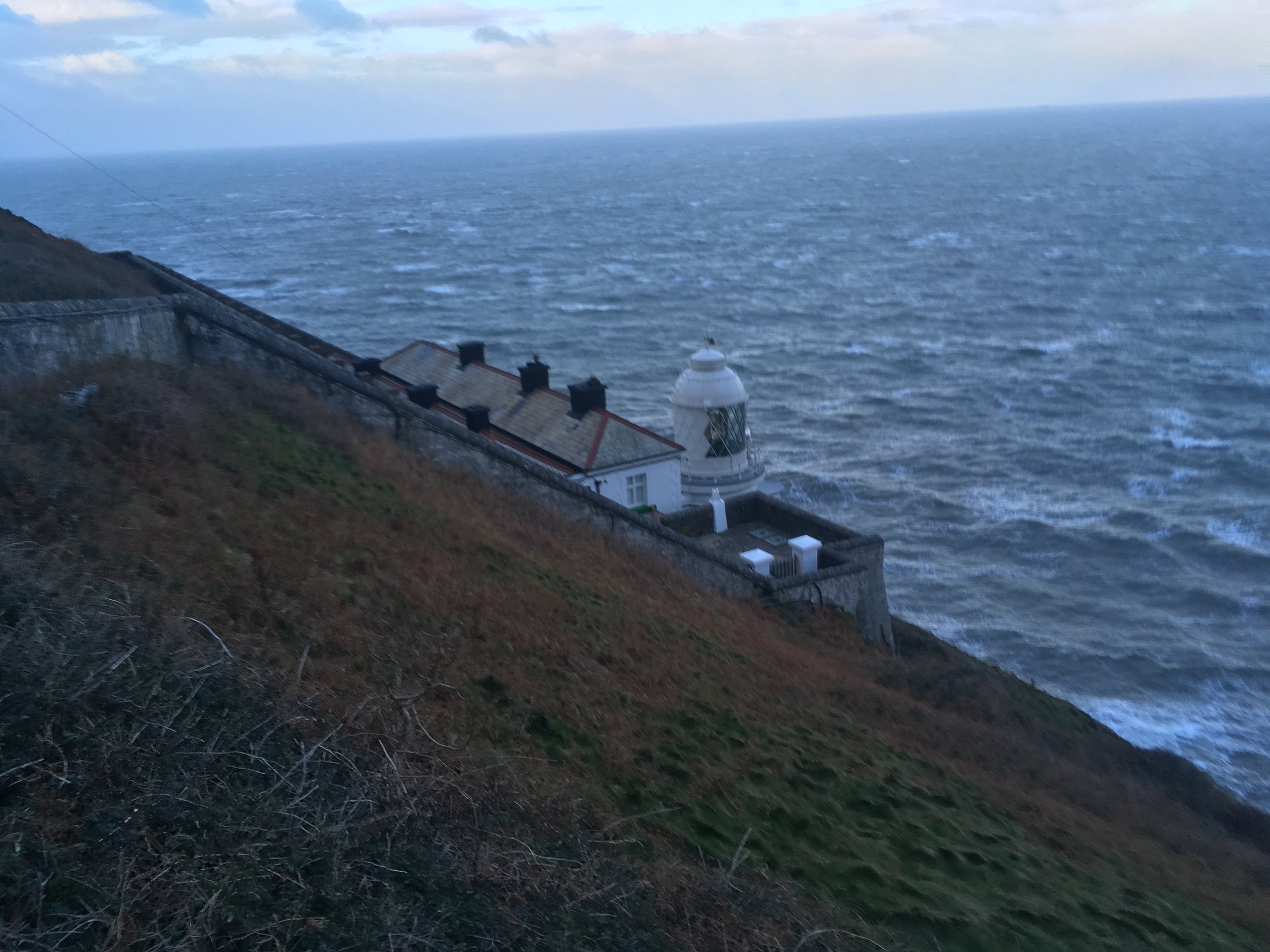Ever since I took hold of Optimus (my wonderful Transporter Kombi van) a few months ago, I’ve wanted to use him to get away for a weekend of adventure, wilderness and training. So what better time of year to do it than January; I was bound to get some glorious weather, right?
Oh I do like to be beside the seaside
I’d been checking the weather all week and it wasn’t looking great, but it wasn’t awful either (for January). Late Friday afternoon I loaded up Optimus with the bike, sleeping bags (two for extra warmth), roll mat, a lot of thermal and waterproof clothing and just a few essentials I’d be needing - torch, map and a book.
My plan for the Friday night was to head for Appledore on the north Devon coast. I’d read that you could pay £5 to park your camper-van overnight right on the banks of the convergence of the Taw and Torridge rivers before they make their way out into the Bristol Channel. It looked like a stunning spot and I’d figured that on a cold, dark night in January the carpark would be deserted. I was surprised when I arrived to find plenty of grand campers, some stylish Transporters and some more weary looking converted vans already in place for the evening. There was still a spot though right next to the water and I grabbed it.
I’d already checked out Google Maps and knew there was a fish and chip shop just a few hundred metres away. I was imagining opening the boot, sitting in the back and listening to the sounds of the waves as that glorious odour of salt and vinegar-covered chips filled my nostrils. The first blow to this was when I discovered that the parking meter only took cash, of which I had none. No matter I thought, I’ll find a cashpoint, get my fish and chips then use the change to pay. Google Maps kindly revealed that the nearest cash point was in Bideford, a good drive back the way I’d just come.
Off I went, returning and, led by my nose, heading straight for the purveyors of battered cod and golden brown fried potatoes. I arrived just in time to witness the door being locked from the inside and, looking longingly through the window like Charlie salivating over the promise of a golden ticket, was greeted with an apologetic but helpless look in return. I’d spotted a decent-looking pub opposite the water and so headed there instead. You never know what sort of pub you’ll be walking into in the more remote parts of our great isle and I was pleasantly surprised to find that it looked cosy, not a single patron’s head swivelled in my direction as I walked through the door and I received a friendly welcome at the bar. There was only one thing on the menu I could choose; fish and chips with mushy peas. OK so it came on a plate and not in paper and I had only the slightest glimpse through the window of the water, but it tasted good nonetheless.
I returned to the van content, some of my fellow happy campers busy organising things in and around their vans. And organised they seemed, far more so than me as I hung sheets over my windows with electrical tape to act as curtains. They had foil-lined blinds that fitted each pane of glass in their vehicle perfectly, making them looking like some sort of Mars Rover vehicle. Makeshift soft furnishings in place, I lay my roll mats and sleeping bag on the floor of the van, using the other as a pillow as I felt surprisingly cosy, and fell asleep next to the bike.
Am I in a horror movie?
I woke to the sound of clanging metal and was instantly aware of the presence of a large number of people around the van. Peering through the sheet taped to the rear window, heavy with condensation, I could see a group assembling what looked like a makeshift fence blocking off the back of Optimus. Alongside me was parked one of those open-backed monster trucks so common on our roads these days and what I thought was a speedboat attached to the rear. I was already hemmed in at the front by another camper-van and for a moment I was concerned that I’d ended up in one of those low budget horror films where all of the locals are in on it. Was I going to be surrounded, set on fire and burned as a sacrifice to the local god of the sea? Nervously, I slid open the side door and climbed out, concerned I may be greeted by a mob wielding planks of two by two full of nails, pitch forks and rag-covered torches, dipped in oil and burning intensely.
Instead, what I found was a large amount of people milling about in wetsuits. An older gentleman, for some reason surprised to see me emerge from the van (there were at least 15 similar ones in the car park interspersed with actual camper vans) said good morning, and I asked him what was going on. Turns out, there was a sea rowing gala that morning (rather them than me) and he politely offered to get them to move the mini-marquee they’d been erecting which was blocking my escape…I mean exit route. With the van out of it’s temporary prison, I readied myself for the day’s ride and set off looking for something to eat. The Golden Arches reared their head at the side of the road and I took the opportunity to enjoy a sausage and egg mcmuffin, hash brown and a tea, safe in the knowledge that I’d be burning it off very soon.
The sun begins to rise across the water
An uphill start
I knew there weren’t many long-term parking spaces in Braunton where the Tarka Trail began, a 30-mile traffic-free cycle route that follows the Taw estuary and a section of disused railway line. It’s one of the longest traffic-free cycle paths in Britain and had been on my adventure bucket list for some time. The lack of parking meant i had to head a few miles out of town to the beautiful Saunton Sands, a huge expanse of beach popular with surfers and used for numerous films and pop videos, including that end of evening/wedding/party or any other event for that matter, classic, Angels by Robbie Williams.
I’d forgotten that the road down to the car park was a steep, slippery concrete track full of speed bumps, not the easiest start to what was planned as a gentle ride. Having parked up alongside numerous Transporter vans clearly belonging to surfers rather than cyclists, I mounted the bike and successfully climbed the hill back up to the main road without incident and I was on my way. A downhill stretch into town with the wind behind me made for a fast and easy start, the incredible vast and grass-tufted sand dunes of Braunton Burrows undulating their way to the shoreline on my right.
Saunton Sands with the beginning of the endless sand dunes behind
I found the signs for the Tarka Trail as soon as I entered Braunton and on the other side of a pay & display car park I found the beginnings of the route proper. The path was well maintained and headed out alongside marshland and then the perimeter fence of the former RAF Chivenor, now home to the Marines. It brought back fond memories of my childhood when I remember visiting for an airshow; we parked in a huge carpark and my dad said that we should remember that we were by an orange VW camper van. Upon leaving the show, we discovered that there must have been around 50 orange VW campers in the car park and it took us some time before we located our Nissan Bluebird. Strange that one of the reasons I was now visiting was to have my own adventure in my VW van, I wondered as I rode along how much of my desire to own the van stemmed from this memory.
The path reached the water and then skirted along its very edge, the waves lapping against the low wall to my right. It was Saturday morning and the path was alive with families on bikes, dog walkers and joggers. I’d forgotten my bell and this turned out to be an oversight. In my mind I was going to be travelling along completely alone in the wild, but with the path heading towards the busy town of Barnstaple, this proved to be far from the case.
Rising to meet a bridge busy with vehicles, I crossed in the cycle lane that ran alongside the main road, briefly jolted back into reality as the traffic streamed in both directions, before dropping back down to the estuary on the other side and instantly back into my peaceful cocoon accompanied by the sounds of the waves and the numerous birds swooping by and digging for their brunch on the banks of the estuary. The joggers and dog-walkers soon subsided and I was left to enjoy looking out for signs of what must once have been one of the most beautiful railway lines in the country. I was also left with the incredibly strong headwind buffeting me and making it feel as if I there was a tug-of-war rope wrapped around my waist and a local rugby team consisting mostly of ginormous farm workers pulling me backwards as I attempted to cycle away. My average speed plummeted as did the gear I was cycling in, and I accepted that my lot for the next 20 miles or so was to drag the entire squad of Old Bidefordonians along for the ride.
The great thing about going so slowly was that it gave me time to take in my surroundings. The bleak but beautiful natural environment and the constant reminders of the area’s rich industrial heritage kept me fascinated throughout and when I reached the old Bideford station and a pub that sat alongside the platform with a sign promising cream teas lured me in. I assume the sign sits outside all year round as when I asked at the bar, I was told that all they had was chocolate bars and crisps. A KitKat, a bag of salt and vinegar and a pot of tea later, it was time to head back out into the wind.
I continued along the line, passing over the same river time after time as it meandered through the countryside with numerous oxbows. Long forgotten canal locks, an impressive stone aqueduct and grand industrial buildings gradually gave way to thick forest and with this, so the quality of the path deteriorated too, evolving from the smooth tarmac surface I’d been riding for over 20 miles into compacted gravel with jagged slithers of bedrock poking through. On the cross bike this would have been fine, but my old-school 23mm road bike rubber wasn’t ideal for the job. And then it started to rain.
At 25 miles and still about seven from Meeth where the cycle path ended, I decided to turn back. I was more than happy that I’d get 50 miles in for the day and I was looking forward to turning round, knowing the wind would be behind me most of the way back. I figured I’d make good time because of this; I figured wrong. Not long after the tarmac returned, I felt my front tyre soften and upon inspection, I realised I had a slow puncture. I also realise that the torrential rain, 50mph winds and temperature of around 4 degrees had made my hands so cold even through my waterproof gloves, that I was unable to get the tyre off the wheel to change the inner tube. Pumping it up, I rode a few miles steadily, paying close attention to how it felt beneath me and so the routine was set for the journey back. Some time, I’m not sure how long exactly, and numerous tyre inflations later, I made it back to the van. A quick change and clean of both the bike and myself, a cup of tea from the beach cafe and I was on my way to my next planned overnight stay.
No room at the inn
The road towards Lynton and Lynmouth involved a series of ever-steepening hills, and I knew that when I got there, the steepest of all was waiting. Driving alongside the river, the road descended steeply, with signs warning of 25% sections, into the village of Lynmouth, a place once destroyed by an epic flood. It was easy to see why, flanked as it was by steep forested hills with powerful rivers careering downwards toward the harbour and the sea beyond. Climbing once again out of the village onto Countisbury Hill, I recalled the numerous times my family had visited during my childhood and how in my head, the hill seemed to be of epic proportions. It turns out, my childhood memories were accurate; Countisbury Hill was as steep as I remembered, with more 25% signs and to add to the sense of peril, the road clung to the cliffs, dropping away hundreds of feet at what seemed like an almost vertical angle to the rough sea below.
The top of the hill was to be my overnight stay…sort of. It was a 1.5-mile walk to my accommodation once I’d abandoned the van on the top of the moor. My plan had been to get there, settle in, then take a walk along the South West Coast Path back to a pub I’d already scouted out. The long day and the wild weather (it was by now a wind of proportion usually reserved for houses falling onto witches) dissuaded me and I chose to stop at the pub on the way. The pub was the kind you dream of finding in the countryside, flagstone floors and a roaring fire with an empty table right beside, hearty food and a fine selection of craft beers. Having warmed up considerably by the fire, satiated my hunger with the best steak and ale pie I’ve ever had (a real pie at that, one completely surrounded in pastry, not one of those pretend pies with a ceramic base that is disappointingly inedible) and rehydrated with a fine craft beer from Bath Ales, it was time to head for my…ahem…hotel of sorts. I had considered asking if the pub had any rooms left, or even if I could lay my sleeping bag alongside the dog bed nestled next to the fire, but my plan was already made and it was the main part of the adventure for the weekend.
From the car park, a narrow tarmac path led out across the moor into the darkness. It was pitch black; Exmoor is in fact Europe’s first Dark Sky Reserve, the lack of artificial lights protected to allow you to enjoy the true wonders of the cosmos. As i gathered my things, the clouds parted and above me I could see the distinctive band of the Milky Way traversing the night sky. The only light came from my bike light, a powerful USB rechargeable one I purchased a few years ago that allows you to actually see as opposed to just be seen like many basic bike lights. There was not a soul or sound, except for the wind which occasionally blasted me sideways across the narrow path; no cows, sheep, nothing. The path began to descend sharply in a series of twisting hairpins, down into a gulley which I knew only from studying the map beforehand, eventually made its way down to the sea. Originally flanked by thick gorse, as I descended further the valley sides were covered in rockfalls, piles of rubble that looked as if some village had been blown up and the ruins left where they lay. It was as close to being on the moon as I guess I’ll ever feel.
The walk seemed to take forever, the darkness never allowing me to know where my destination lay, but as the path straightened out I finally spotted my hotel for the night, a stone bothy. Bothies were originally places of refuge for farm hands or estate workers but these days are more commonly designated as refuges for walkers, mountaineers and others looking for adventure. This one is owned by the National Trust and for a paltry £22 you can stay for the night. After the usual challenge of getting into any holiday accommodation, which always reminds me of a Crystal Maze challenge, involving 4-digit codes and hidden key-safes (except with this one, there’s no automatic lock-in, just a permanent lock-out if you can’t solve it), I was in. Accommodation was basic, a wooden bunk-bed on which I could lay my roll mat and sleeping bag, a sink with cold-water tap, a few candles and a composting toilet that involved venturing back outside and mastering another door lock.
The door to the bothy had two parts, a sturdy outer barn-door shutter made of solid wood and an inner one with a single pane window. Once in and with the outer door closed, I was completely shut off from the outside world. The only light came from the few candles and my head torch which allowed me to sit and read my book, the tale of a man who decided to cycle the entire route of the 2000 Tour de France, albeit in twice the time as the pro’s, before settling down for the night. A peaceful night it was not; I frequently woke as the wind increased in strength, buffeting the outer wooden door and whistling across the tin roof, but I’ve never felt more alive. I felt like Ray Mears, Bear Grylls or my hero, Sir Ranulph Fiennes.
Short and windy
The wind was still going strong when I rose, and as the sun began to rise I took a walk further down the path to the lighthouse that I knew lay just around the headland. The whitecaps, the foam crests that sit atop the waves, were buffeting against the cliffs before falling away, and the wind was making it hard to stand. The view was breathtaking.
My plan had been to dump the kit in the van, get the bike out and get straight onto the country lanes of Exmoor. The wind however seemed so wild as to be dangerous, and after climbing back out of the gully, I drove down into the fishing village of Porlock for breakfast and to wait it out for a while.
I sat in the cafe, run by another Brummie who’d escaped to the south-west and checked the weather app. It looked as if the wind would ease slightly; already seeming lighter as I walked around the town, but I couldn’t tell if that was just because of the sheltered position at the foot of the fabled Porlock Hill. The steepest A-road in the UK was certainly not on my list of things to cycle that day, but there was a toll road that ran parallel and wound its way through the forest at a much gentler gradient of around 6 or 7%, not unlike many Alpine climbs. The toll road was just over 4 miles long and I figured it would be a good challenge to ride up and down as fast as I could.
Fuelled by tea and some an apricot jam-filled shortcake, I finally replaced the inner tube on the front wheel and I set off. The toll road split off just as Porlock Hill reared its ugly head and I gently rose out of town past the final few houses. The gradient changed gently up and down but never kicked too much, allowing me to push from the start. The road was strewn with branches and pine cones, requiring me to to weave in and out of them like some sort of Atari computer game. I felt strong and thought I was making good progress, only to look at my watch and realise that I wasn’t even halfway. I reached the toll booth, just £1 for bicycles and deposited my coin in the honesty box, watched over by the man I presumed manned the toll booth, from his kitchen window opposite. Just checking I was being honest I suppose.
The last section was the hardest, the loss of tree cover meaning I was hit full on by the winds again and about half a mile from the top, a hailstorm added to the sense of drama. It was also the steepest and I pushed hard to maintain my pace. After crossing a cattle grid I could see the junction with the main road ahead and knew that was where the Strava section came to an end so I put on a little sprint finish a la Tour de France and then slumped over my handlebars trying desperately to draw in air without ingesting a hailstone. My only choices to get down were to take on the nearly 30% main road, follow a cycle path through the forest which was a green line on my Sustrans map (green lines can mean everything from off-road but still beautifully laid tarmac, through to a vaguely distinguishable route through the swamps of Mordor), or to retrace my steps.
Descending the toll road I picked up speed quickly, leaning into the gusts of wind each time they hit to avoid being blown across to the other side. Not that it mattered, on the whole ride up and down, the only people I saw were the toll booth guy from his kitchen window and a woman out walking her dog. I wondered how much it was for dogs to use the road. I was conscious of the slippery surface and the remnants of evergreen lining the route, but i was also invigorated by picking up speed easily after a tough ascent. Whilst it took me over 27 minutes to reach the top (6th fastest on Strava this year), I was back down by the van inside 11 minutes (3rd fastest in 2019). I was pleased with these stats, until I saw that the fastest ascent ever had been made in 14 minutes, nearly twice as quickly as me and only a little longer than it had taken me to come down. I later realised that this was because the Tour of Britain had used this road so I was less disappointed.
The end of the adventure
With the bike safely stowed in the van, that was it, my mini-adventure was over. I drove the coast road back to Bristol, passing through places full of childhoods memories; Minehead where walks along the seafront and ice creams were common place, as well as searching for golf balls with my dad in the bushes and sand dunes alongside the links course. Car Hampton, where I consumed numerous sausage and chip dinners in the Butcher’s Arms after tiring myself out climbing up and sliding down the fibre glass house in the shape of a boot, long gone now likely for health and safety reasons. Blue Anchor bay, where we’d enjoyed weekends and school holidays in our static caravan, Watchet, its famous centuries old harbour and the place where, every summer Bank Holiday, we’d enjoyed taking part in their window-spotting competition.
This didn’t involve looking for panes of glass, oh no, it was far more complex than that. As part of their summer fete, the locals organised the competition and all the businesses took part. Their task was to place something in their window that didn’t belong there, often as simple as a staple or a coin but sometimes more complex and sneaky. Holiday-makers would traipse around the town with a paper form and pen, staring shoulder-to-shoulder into the windows. When one family member spotted the mystery item, hushed murmurs would signal it was time to move on, before cupping their mouth and whispering the item into the ear of the pen-holder, so as not to give the game away to fellow contestants. I can’t remember what the prize was, a free meal at a local pub or similar, but answers were treated with the secrecy of a coded message outlining the plans of D-Day. The fete had two other memorable features; a parachute display team would be dropped high above the Memorial Grounds where it took place and upon landing, would pick up the nearest square of numbered cork on the field. These had been placed there earlier in the day by entrants into what was a cross between a raffle, spot the ball and an RAF training exercise.
But most of all, I remember the annual Town Crier contest, I believe it may have been the UK championships, where men (and occasionally women) from all over the country would come dressed in their ancient garb, ring their bells and bellow out announcements, always beginning with ‘Oyez, oyez’ (pronounced Oh-yay) to get onlookers attention. These days it would resemble a sort of shout-off between Brian Blessed, Alan Dedicoat the ‘voice of the balls’ and Peter Dickson of X-Factor fame.
I climbed out of the town and headed for home on the twisting road wedged between the sea to my left and the Quantock Hills rising away to my right.
Had I enjoyed the adventure I’d set out for?
Oyez, oyez.




